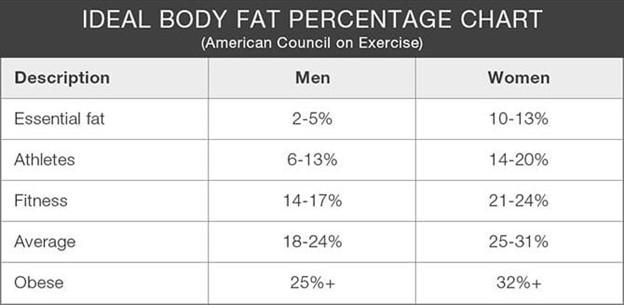Finding and working on your training gaps will improve you in and out of the gym.
If you have ever been on the underground rail system in London, you are probably familiar with this prerecorded message.
“Mind the gap. Please mind the gap.”
When I was there, this almost drove me around the bend, but granted, that doesn’t take much. Anyhow, let me get back on the subject of training gaps. The majority of your time in the gym needs to be based around the big three of
Body composition (Fat loss & Muscle)
But sometimes, training gaps appear because you’re chasing specific exercise goals, and stuff gets forgotten. For example, you have been in a fat loss phase for a while and are not as strong as you used to be.
Now, if you’re wondering if you have any gaps in your training, this is for you. Dan John, the author of Can You Go, has a few simple assessments to determine whether you have any training gaps. After completing the following tests, your gaps will become apparent.
Strength
No one goes into their workout thinking, “I’m here to get weaker today.” The main thing about picking up and putting down weights is to get stronger. Being stronger makes life in and out of the gym easier and more satisfying. Here are two tests to see if your strength is lacking.
2 Minute Plank
If you don’t reach the 2-minute mark, what does that tell you? You’re not strong enough. If you want to apply force to gravity (lifting weights), resisting gravity (isometrics/eccentric) is essential. If you haven’t the strength to resist gravity, it’s time to build some strength.
Farmer’s Walk
The Farmer’s Walk challenges your grip, posture, and conditioning. Grip strength and good posture can be taken for granted, but both play a significant role in your quality of life in and out of the gym. (1)
Loading this test is tricky. If it’s been a while since you picked up a weight or are new to this exercise, use 25-50% (dumbbell) of your body weight in each hand. If you’re an experienced exerciser, use Dan John’s Mass Made Simple standards.
Bodyweight Load
Under 135 pounds 135 pounds (or 65/70-pound dumbbells)
136-185 pounds 185 pounds (or 90/95-pound dumbbells)
186-205 pounds 205 pounds (or 100-pound dumbbells)
Over 206 pounds 225 pounds (or 110-pound dumbbells)
If in doubt, go on the heavier side. You need to work on your strength if you cannot walk at least 40 yards with your weight.
Mobility
Can you touch your toes?
Can you raise your arms above your head without extending your lower back or sticking out your ribcage?
If you can, you’re good to go overhead and pick stuff up off the ground. But if you didn’t, you’ve got mobility work to do. If you have trouble determining this, I can help.
Let’s take this step further with a sit-and-rise test.
All you need to do is sit on the ground and stand back up without using your hands or knees. It may sound simple, but there’s a catch. You will subtract one point from five each time your hand or knee touches the ground.
Get down (- 1 for each hand/knee from 5)
Get up (-1 for each hand/knee from 5)
Total (Your score out of 10)
You’re good if you got a score of eight or above, but if you scored seven or below. Mobility work will be your go-to for a while. Your quality and quantity of life may depend on it. (2)
Body Composition

The guide above is a great starting point, but for those starting their health and fitness journey or who don’t have access to body fat testing, there’s an easier way to determine whether fat loss is your goal.
Is your waistline half of your height?
Dr. Margaret Ashwell, former director of the British Nutrition Foundation, said, “Keeping your waist circumference to less than half your height can help increase life expectancy for every person in the world.” (3)
To do it, measure around the narrowest part of your ab area (you should already know your height), and with some simple math, you’ll have your answer. For example, a pass would be.
74 inches tall with a 37-inch waistline
And a ‘fail would be.
74 inches tall with a 40-inch waistline
Fat in and around the internal organs is not great. If your waistline is more than half your height, you need to base your training around fat loss with a touch of strength.
The last word….
Retake the tests after training your weakness for six to 12 weeks to see if you’ve improved. If you have, keep going; if not, change what you’re doing because it’s not working. And, if you need help, you know where to find me.
Wrapping up
If you passed all of them, congratulations, you’re perfect. If not, minding these training gaps will help you become a more robust and better human being. And who knows? Training your gaps may get you to where you want to go faster.
References
- Lancet. 2015 Jul 18;386(9990):266-73. doi: 10.1016/S0140-6736(14)62000-6. Epub 2015 May 13. Prognostic value of grip strength: findings from the Prospective Urban Rural Epidemiology (PURE) study.
- Eur J Prev Cardiol. 2014 Jul;21(7):892-8. doi: 10.1177/2047487312471759. Epub 2012 Dec 13. Ability to sit and rise from the floor as a predictor of all-cause mortality. Brito LB1, Ricardo DR2, Araújo DS3, Ramos PS2, Myers J4, Araújo CG5.
- PLoS One. 2014 Sep 8;9(9):e103483. doi: 10.1371/journal.pone.0103483. eCollection 2014.Waist-to-height ratio is more predictive of years of life lost than body mass index. Ashwell M1, Mayhew L2, Richardson J2, Rickayzen B2.
Leave a Reply